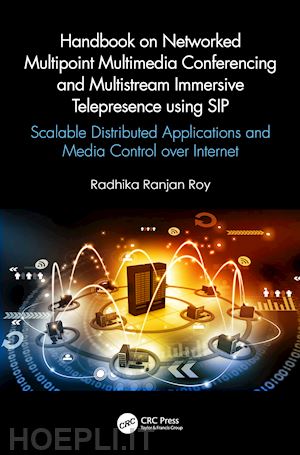Radhika Ranjan Roy has been an electronics engineer, United States Army Research, United States Command, Control, Communications, Computers, Combat Systems, Intelligence, Surveillance, and Reconnaissance (C5ISR)-S&TCD Laboratories (previously known as CERDEC), Aberdeen Proving Ground (APG), Maryland, United States since 2009. Dr. Roy is leading research and development efforts in the development of scalable large-scale SIP-based VoIP/Multimedia networks and services, cybersecurity, artificial intelligence and machine/deep learning (AI/ML/DL) architecture, mobile ad hoc networks (MANETs), Peer-to-Peer (P2P) networks, cybersecurity detecting application software and network vulnerability, jamming detection, supporting an array of the Army/ Department of Defense’s Nationwide and Worldwide Warfighter Networking Architectures and participating in technical standards development in Multimedia/Real-Time Services Collaboration, IPv6, Radio Communications, Enterprise Services Management, and Information Transfer of Department of Defense (DoD) Technical Working Groups (TWGs). He received his PhD in Electrical Engineering with Major in Computer Communications from the City University of New York (CUNY), NY, United States in 1984 and his MS in Electrical Engineering from the Northeastern University, Boston, MA, United States in 1978. He received his BS in Electrical Engineering from the Bangladesh University of Engineering & Technology (BUET), Dhaka, Bangladesh in 1967. He was born in the renowned country town of Derai, Bangladesh. Prior to joining CERDEC, Dr. Roy worked as the lead system engineer at CACI, Eatontown, NJ from 2007 to 2009 and developed Army Technical Resource Model (TRM), Army Enterprise Architecture (AEA), DoD Architecture Framework (DoDAF), and Army LandWarNet (LWN) Capability Sets, and technical standards for Joint Tactical Radio System (JTRS), Mobile IPv6, MANET, and SIP, supporting Army Chief Information Officer (CIO)/G-6. Dr. Roy worked as senior system engineer, SAIC, Abingdon, MD from 2004 to 2007, supporting Modeling, Simulations, Architectures, and System Engineering of many Army projects: WIN-T, FCS, and JNN. During his career, Dr. Roy worked in AT&T/Bell Laboratories, Middletown, NJ as senior consultant from 1990 to 2004 and led a team of engineers in designing AT&T’s Worldwide SIP-based VoIP/Multimedia Communications Network Architecture, consisting of wired and wireless, from the preparation of Request for Information (RFI) to the evaluation of vendor RFI responses and interactions with all selected major vendors related to their products. He participated in and contributed to the development of VoIP/H.323/SIP multimedia standards in ITU-T, IETF, ATM, and Frame Relay standard organizations. Dr. Roy worked as senior principal engineer in CSC, Falls Church, VA from 1984 to 1990 and worked in the design and performance analysis of the US Treasury nationwide X.25 packet-switching network. In addition, he designed many network architectures of many proposed U.S. Government and Commercial Worldwide and Nationwide Networks: Department of State Telecommunications Network (DOSTN), U.S. Secret Service Satellite Network, Veteran Communications Network, and Ford Company’s Dealership Network. Prior to CSC, he worked from 1967 to 1977 as deputy director, Design, in PDP, Dhaka, Bangladesh. Dr. Roy’s research interests include the areas of artificial intelligence, machine/deep learning, blockchain cloud and fog computing, mobile ad hoc networks, multimedia communications, peer-topeer networking, and quality-of-service. He has published over 60 technical papers and is holding or pending over 35 patents. He also participates in many IETF working groups. Dr. Roy authored three books Handbook on SDP for Multimedia Session Negotiations: SIP and WebRTC Telephony (CRC Press/Taylor & Francis, 2018), Handbook on Session Initiation Protocol: Networked Multimedia Communications for IP Telephony (CRC Press/Taylor & Francis, 2016), and Handbook of Mobile Ad Hoc Networks for Mobility Models, Springer, 2010. He lives in the historical district of Howell Township, New Jersy, with his wife Jharna.











